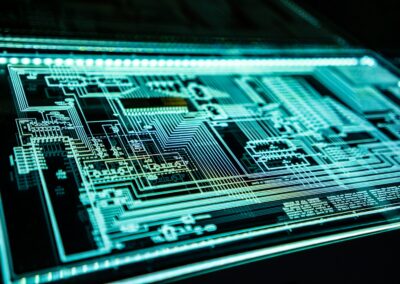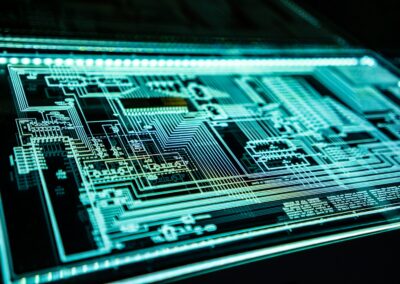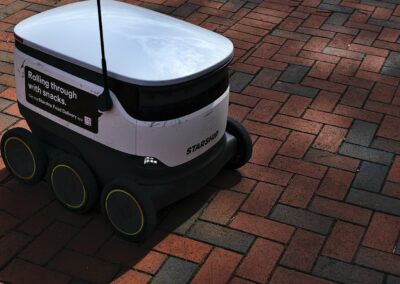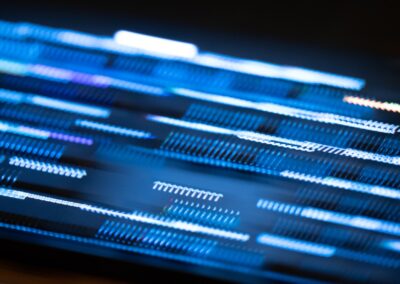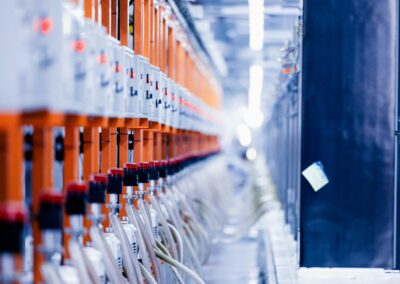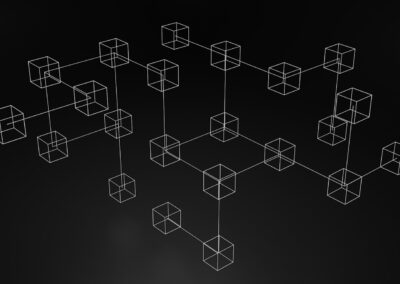The Role of Digital Twins in Shaping Cybersecurity Strategies
Introduction to Digital Twins and Future Cybersecurity
The emergence of digital twins and future cybersecurity highlights a critical intersection in today’s rapidly evolving technological landscape. Digital twins, which are virtual replicas of physical assets, processes, or systems, offer valuable insights into their real-world counterparts through continuous data collection and simulation. As organizations increasingly adopt digital twin technology, it is imperative to understand its implications for cybersecurity and data protection. Digital twins not only enhance operational efficiency but also introduce new dimensions to cybersecurity challenges and solutions.
As digital twins become integral to modern business operations, their impact on cybersecurity cannot be overlooked. These digital models are employed across various sectors, including manufacturing, urban planning, and healthcare, providing real-time monitoring and predictive analytics. However, their extensive use of data and connectivity also presents potential vulnerabilities. Ensuring the security of digital twins involves addressing risks related to data breaches, unauthorized access, and system integrity. Thus, the intersection of digital twins and cybersecurity is pivotal for maintaining robust data protection measures.
Understanding the implications of digital twins for future cybersecurity involves examining how these technologies alter traditional security paradigms and what strategies can be employed to mitigate associated risks. This exploration reveals how advanced technologies like artificial intelligence and blockchain can be leveraged to enhance the security of digital twins and ensure data protection.
Cybersecurity Risks and Challenges Associated with Digital Twins
The integration of digital twins and future cybersecurity introduces several risks and challenges that organizations must address. Digital twins generate and transmit vast amounts of data, often including sensitive information related to operational processes and system performance. This data-centric nature makes them attractive targets for cyberattacks. Potential threats include data breaches, where unauthorized parties gain access to confidential information, and cyber espionage, where attackers exploit digital twins to gather intelligence on critical infrastructure.
Another challenge is ensuring the integrity of digital twins. As digital models are continuously updated with real-time data, any compromise in the data’s accuracy or security can lead to significant consequences. For example, a tampered digital twin may produce erroneous simulations or predictions, affecting decision-making and operational efficiency. Protecting against such threats requires implementing robust security measures, including encryption, access controls, and regular system audits.
Additionally, the interconnected nature of digital twins with other systems and networks increases the attack surface for potential cyber threats. As these digital models interact with various applications and data sources, securing all entry points and ensuring comprehensive protection becomes more complex. Organizations must adopt a holistic approach to cybersecurity, integrating advanced threat detection and response mechanisms to safeguard digital twins and the data they manage.
Enhancing Security Measures for Digital Twins with Advanced Technologies
To address the cybersecurity challenges associated with digital twins, leveraging advanced technologies is crucial. Digital twins and future cybersecurity benefit significantly from the integration of artificial intelligence (AI) and blockchain technology. AI-driven security solutions can enhance threat detection and response by analyzing large volumes of data and identifying patterns indicative of potential cyber threats. AI algorithms can monitor the behavior of digital twins, detect anomalies, and trigger alerts for suspicious activities, thereby improving the overall security posture.
Blockchain technology also plays a pivotal role in enhancing the security of digital twins. Its decentralized and immutable nature ensures the integrity and authenticity of data transmitted between digital twins and other systems. By using blockchain for data verification and transaction recording, organizations can prevent tampering and unauthorized alterations of digital twin information. This ensures that the data used for simulations and analysis remains reliable and secure.
Moreover, implementing a layered security approach, which includes encryption, multi-factor authentication, and continuous monitoring, further strengthens the protection of digital twins. Encryption safeguards data both in transit and at rest, while multi-factor authentication adds an additional layer of security for accessing digital twin systems. Continuous monitoring helps detect and respond to threats in real-time, ensuring that any vulnerabilities are addressed promptly.
Strategic Considerations for Cybersecurity in Digital Twin Deployments
Organizations deploying digital twins must consider several strategic factors to effectively manage digital twins and future cybersecurity challenges. First, it is essential to develop a comprehensive cybersecurity strategy that includes risk assessments, threat modeling, and incident response planning. This strategy should address the specific needs and vulnerabilities associated with digital twin technology and outline clear procedures for managing potential security incidents.
Training and awareness programs are also critical for enhancing cybersecurity in digital twin deployments. Ensuring that employees and stakeholders are aware of cybersecurity best practices and potential threats helps create a security-conscious culture. Regular training sessions and simulations can prepare teams to respond effectively to security breaches and mitigate risks associated with digital twins.
Lastly, collaboration with cybersecurity experts and technology partners can provide valuable insights and support for securing digital twins. Engaging with experts who specialize in digital twin security and emerging technologies helps organizations stay abreast of the latest threats and solutions. This collaborative approach ensures that digital twin deployments are equipped with state-of-the-art security measures and strategies to safeguard against evolving cyber threats.
In conclusion, the integration of digital twins and future cybersecurity presents both opportunities and challenges. As digital twin technology continues to advance and become more prevalent, addressing cybersecurity risks is paramount for protecting data and maintaining operational integrity. By leveraging advanced technologies, adopting robust security measures, and considering strategic factors, organizations can enhance the resilience and security of digital twin deployments, ensuring their success in an increasingly digital world.
#DigitalTwins #FutureCybersecurity #DataProtection #CybersecurityChallenges #DigitalTransformation #ArtificialIntelligence #Blockchain #ModernTechnology #SaudiArabia #UAE #Riyadh #Dubai #BusinessSuccess #Leadership #ProjectManagement


